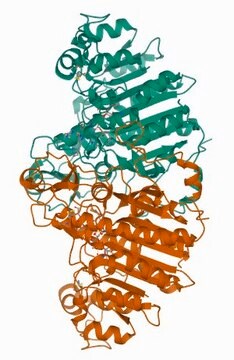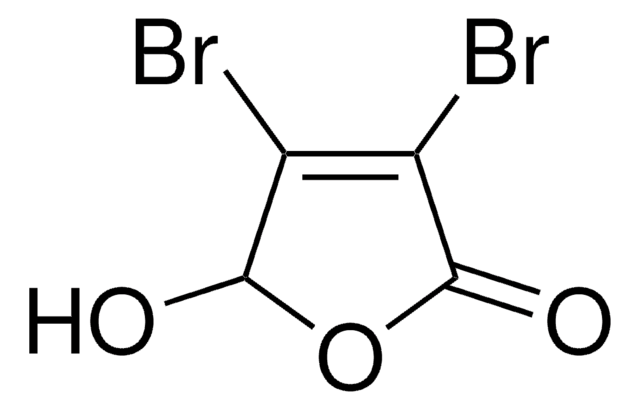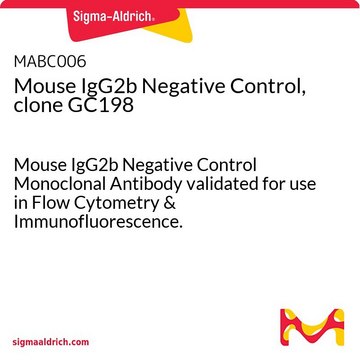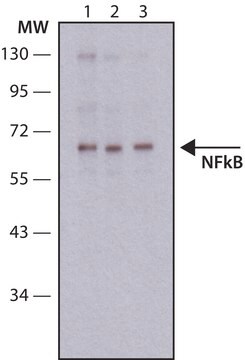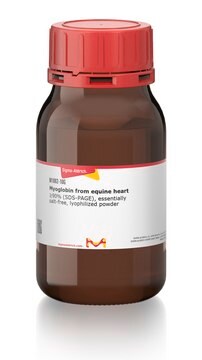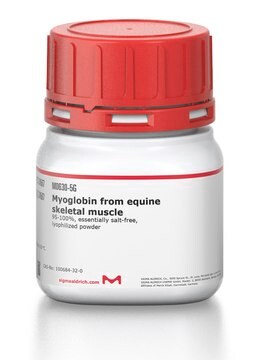MABC006F
Mouse IgG2b Negative Control, clone GC198, FITC conjugate
Mouse IgG2b Negative Control Monoclonal Antibody validated for use in Flow Cytometry & Immunofluorescence.
Faça loginpara ver os preços organizacionais e de contrato
About This Item
Código UNSPSC:
12352203
eCl@ss:
32160702
NACRES:
NA.42
conjugado:
FITC conjugate
application:
FACS
IF
IF
clone:
GC198, monoclonal
técnica(s):
flow cytometry: suitable
immunofluorescence: suitable
immunofluorescence: suitable
citations:
9
Produtos recomendados
fonte biológica
mouse
Nível de qualidade
conjugado
FITC conjugate
forma do anticorpo
purified immunoglobulin
clone
GC198, monoclonal
fabricante/nome comercial
Chemicon®
técnica(s)
flow cytometry: suitable
immunofluorescence: suitable
Isotipo
IgG2b
Condições de expedição
wet ice
modificação pós-traducional do alvo
unmodified
Especificidade
This antibody reacts with the outer membrane protein of some strains of Neisseria gonorrhoeae. No reaction with human cell surface or plasma components has been observed. However, some binding to Fc receptors may occur.
Imunogênio
Protein I preparation from Neisseria gonorrhoeae.
Aplicação
FITC conjugated mouse IgG2b is a monoclonal antibody intended for use as a negative control in flow cytometry. Its use enables an estimation of non-specific binding of mouse monoclonal antibodies to cell surface components in peripheral blood and tissue.
SUGGESTED USAGE
Flow cytometry - use 10 μl direct from the vial per 100 μl of whole blood, or 1 x 10E6 peripheral blood mononuclear cells (PBMC) in 100 μl buffer.
SUGGESTED USAGE
Flow cytometry - use 10 μl direct from the vial per 100 μl of whole blood, or 1 x 10E6 peripheral blood mononuclear cells (PBMC) in 100 μl buffer.
Mouse IgG2b Negative Control Monoclonal Antibody validated for use in Flow Cytometry & Immunofluorescence.
Research Category
Secondary & Control Antibodies
Epitope Tags & General Use
Secondary & Control Antibodies
Epitope Tags & General Use
Research Sub Category
Isotype Control Antibodies
Isotype Control Antibodies
forma física
Purified immunoglobulin. Fluorescein conjugated, ready to use. The antibody is supplied in 1.0ml phosphate buffered saline, pH 7.4, containing 0.2% bovine serum albumin and 0.1% sodium azide. The characteristics of each lot are tested by electrophoresis and flow cytometry.
Armazenamento e estabilidade
Store at 2 to 8oC, for up to 6 months. DO NOT FREEZE. Protect from light.
WARNING
The monoclonal reagent solution contains 0.1% sodium azide as a preservative. Due to potential hazards arising from the build up of this material in pipes, spent reagent should be disposed of with liberal volumes of water.
WARNING
The monoclonal reagent solution contains 0.1% sodium azide as a preservative. Due to potential hazards arising from the build up of this material in pipes, spent reagent should be disposed of with liberal volumes of water.
Informações legais
CHEMICON is a registered trademark of Merck KGaA, Darmstadt, Germany
Exoneração de responsabilidade
Unless otherwise stated in our catalog or other company documentation accompanying the product(s), our products are intended for research use only and are not to be used for any other purpose, which includes but is not limited to, unauthorized commercial uses, in vitro diagnostic uses, ex vivo or in vivo therapeutic uses or any type of consumption or application to humans or animals.
Código de classe de armazenamento
12 - Non Combustible Liquids
Classe de risco de água (WGK)
WGK 2
Ponto de fulgor (°F)
Not applicable
Ponto de fulgor (°C)
Not applicable
Certificados de análise (COA)
Busque Certificados de análise (COA) digitando o Número do Lote do produto. Os números de lote e remessa podem ser encontrados no rótulo de um produto após a palavra “Lot” ou “Batch”.
Já possui este produto?
Encontre a documentação dos produtos que você adquiriu recentemente na biblioteca de documentos.
Narges Labibzadeh et al.
Cell journal, 18(3), 302-309 (2016-09-08)
Nonunion is defined as a minimum of 9 months since injury without any visible progressive signs of healing for 3 months. Recent literature has shown that the application of mesenchymal stromal cells is safe, in vitro and in vivo, for
Passaging and colony expansion of human pluripotent stem cells by enzyme-free dissociation in chemically defined culture conditions.
Beers, J; Gulbranson, DR; George, N; Siniscalchi, LI; Jones, J; Thomson, JA; Chen, G
Nature Protocols null
Vivek Shukla et al.
Cancer research, 77(22), 6267-6281 (2017-09-25)
In this study, we generated induced pluripotent stem cells (iPSC) from normal human small airway epithelial cells (SAEC) to investigate epigenetic mechanisms of stemness and pluripotency in lung cancers. We documented key hallmarks of reprogramming in lung iPSCs (Lu-iPSC) that
Nossa equipe de cientistas tem experiência em todas as áreas de pesquisa, incluindo Life Sciences, ciência de materiais, síntese química, cromatografia, química analítica e muitas outras.
Entre em contato com a assistência técnica